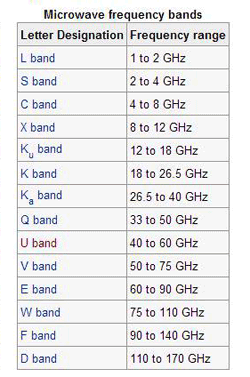
We all know what RF stands for, but a different meaning of the abbreviation can be found from The Essential Guide to RF and Wireless by Carl J. Weisman. He notes that it is more often used in its figurative sense as both a noun and an adjective. So you can generate RF (which makes it a noun) or you can generate an RF signal (which makes it an adjective). However, in Electronic Products , when we use the term, we usually use it to describe a range of frequencies. But we also use “wireless” interchangeably with the abbreviation “RF.”
For the word “microwave,” the author describes “A word you will see occasionally is microwaves. It is often used to describe a range of frequencies. “Millimeter wave(s)” is also used to describe a range of frequencies.”
From an Internet search and from my college text books (yes, I still have them), I keep finding different ranges for RF, microwave, and millimeter wave frequencies.
Microwaves are electromagnetic waves with wavelengths ranging from as long as one meter to as short as one millimeter or, equivalently, with frequencies between 300 MHz and 300 GHz This broad definition includes both UHF and EHF (millimeter waves), and various sources use different boundaries. In all cases, “microwave” includes the entire SHF band (3 to 30 GHz, or 10 to 1 cm) at minimum, with RF engineering often putting the lower boundary at 1 GHz (30 cm), and the upper around 100 GHz (3mm)[1]

Table. Microwave frequency bands, as defined by the Radio Society of Great Britain (RSGB)
Microwave frequency bands, as defined by the Radio Society of Great Britain (RSGB), are shown in the table.
References
[1] Wikipedia for the word “microwave”
Advertisement
Learn more about Electronic Products Magazine





